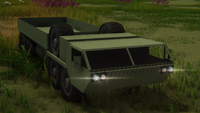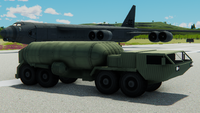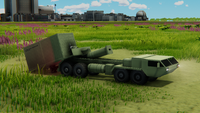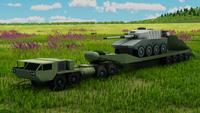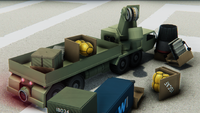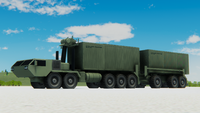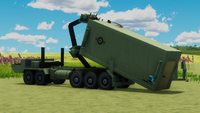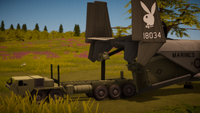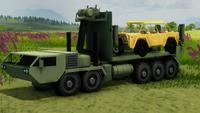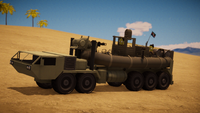Logi II Series
|
Logi II Heavy Expanded Mobility Tactical Truck
|
|||||
|---|---|---|---|---|---|
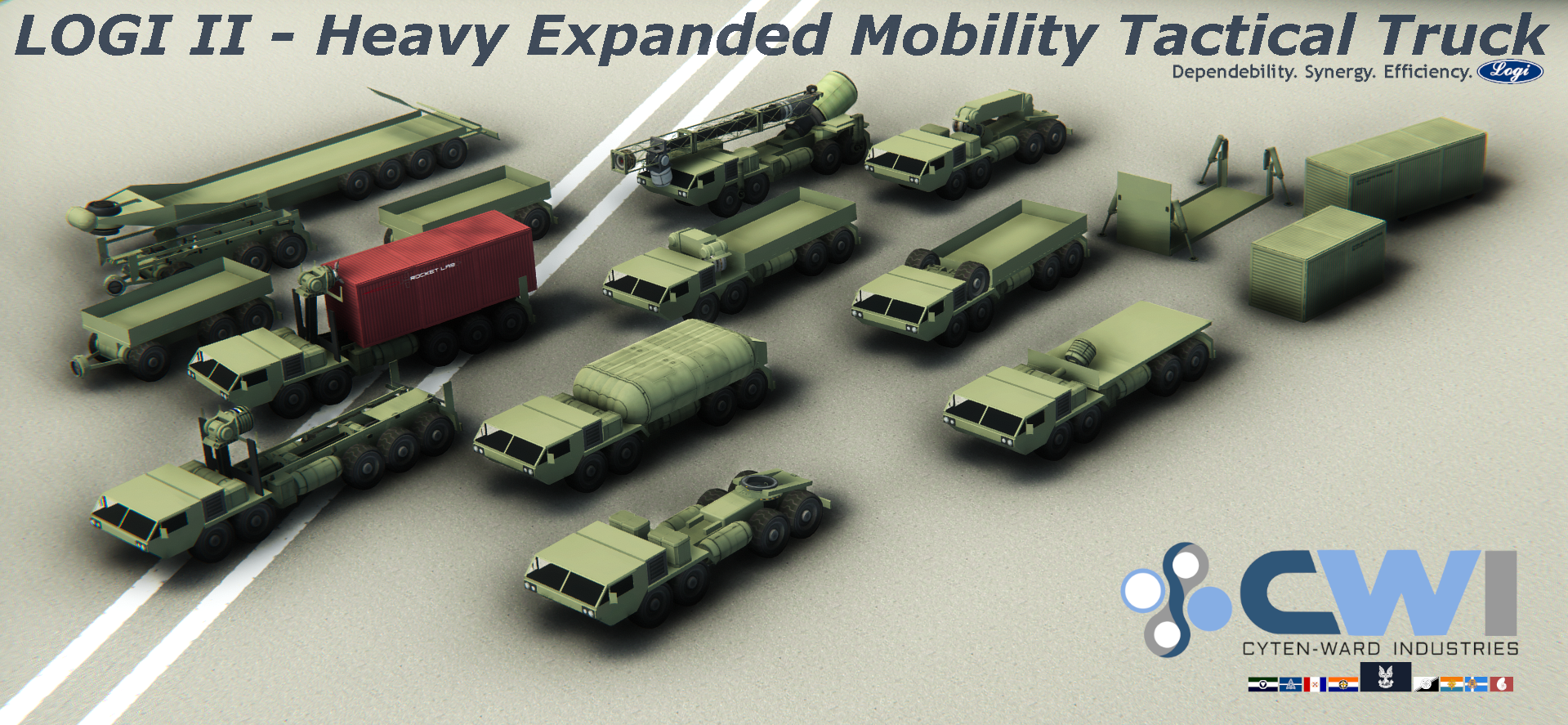 |
|||||
| Role | heavy tactical truck | ||||
| National Origin | Zokesia | ||||
| Production History | |||||
| Designer | Cyten-Ward Industries, Logi Motor Company | ||||
| Unit Cost | 15,406(√) | ||||
| Service History | |||||
| Used By | Zokesia | ||||
The Logi II Heavy Expanded Mobility Tactical Truck (HEMTT) series is a heavy duty logistics mobility system developed by Logi Motor Company in the 2160s to meet expanding needs of global operations and tactical operations.
Development
The Logi II HEMTT design was first envisioned as an improvement to the hugely successful Logi series trucks which were based around 2050s era vehicle design. the vehicles were small and affordable, but their design limitations especially concerning suspension and wheel loading capacity meant more modern systems of vehicles were quickly outstripping the ability of Zokesian tactical vehicles to carry sufficient loads compared to foreign designs. As a result, the Logi company put forth an ambitious design to not only increase the capacity of vehicles, but to transform and streamline the process of loading and unloading supplies and equipment like never before.
Design
The vehicle chassis featured a rugged 8x8 or 10x10 configuration, with ruggedized wheels and suspension to increase durability, off-road capacity, and overall cargo capacity. the all-aluminum chassis reduced weight while keeping strength up and allowed the HEMTT to utilize the most of its power in cargo hauling. The cab was redesigned from the Logi I series heavy truck design and was moved forward of the front axles, to allow greater vision and clearance. The cab was also armored, giving improved survivability to the crew. Additionally, storage was included for spare parts and repair equipment, to allow its crew to repair and maintain the Logi II vehicles even without support equipment.
Vehicle trials proved that the Logi II was able to carry three times as much cargo as the Logi I series, with 30 ton cargo crates easily handled by the vehicle. The vehicle was also equipped with the Logi Universal Hitch, allowing it to connect to all trailers available in the inventory as well as Logi I series trailers for expanded operations.
Additional variants of the basic HEMTT vehicle included the option of a self-loading crane, to facilitate on and offloading of light cargo in rough conditions, and a fuel truck version. A Tractor-trailer version was also built to haul heavy and oversize loads like armored vehicles, and functions similarly to a semi truck. Logi II HEMTT retains its ability to fit inside Mk3 cargo bays, and as such is air-mobile anywhere in the world. Additionally, the Load Handling System and Palletized Loading System versions of the Logi II would revolutionize the tactical mobility landscape with self-loading and self-unloading capability.
Variants
Load Handling System (LHS)
The Load Handling System was developed on the base HEMTT to test the feasibility of self-loading vehicles, to eliminate the need for large crane vehicles to load and unload trucks. Cyten-Ward had already developed the 4, 8, and 12m "Cube Crate" transport system, which allowed the standardization of sizes of cargo transport, and had developed 10 ton and 30 ton cranes for the loading and unloading of these crates, but this system required two separate vehicles: one to load and unload, and one to carry the crate itself. With the Load Handling System, crates up to 10 tons could be self-loaded through a swinging flatbed and arm, and allowed the HEMTT to operate without the need of separate crane vehicles.
Palletized Loading System (PLS)
After development of the Load Handling System, Cyten-Ward engineers realized they could refine the design further and carry increasingly heavy cargos. The Palletized Loading System was a breakthrough of logistics design, allowing a single cargo vehicle to self-load up to 30 tons of cargo in any size Cube Crate, and unload the same cargo at its destination. Furthermore, the development of the PLS trailer allowed a single vehicle to load two crates and transport them with zero outside support mechanisms to destination. Palletized Loading System, therefore, was a vast leap in reducing the cost of logistics operations, as it reduced the requirement to transport two 12m crates from three vehicles (two trucks and a crane) to one vehicle and a trailer, a cost savings of around 60%. The Logi II PLS has since become the gold standard in logistics in the Confederacy, and has made significant impact around the world.
Tactical Palletized Loading System (TACPAL)
TACPAL utilizes the Palletized Loading system of Logi II Vehicles to incorporate weapons systems and fixed ground sites such as AAA, radar, EW and Command bunkers without the need to self-transport. A TACPAL system site can be relocated in as little as 10 seconds with a HEMTT PLS truck, and reduces the operating cost of sites especially where minimal relocation is expected, such as islands, or home defense. TACPAL is capable of being loaded into trucks or aircraft and redeployed without needing to have expensive suspension, engine, or drivetrain systems. With a rated maximum weight of 36 tons, the TACPAL pallet itself is of uniform size (the same dimensions as an 8m Cube Crate) and allows flexibility of options in one transport method.
Gallery
A HEMTT PLS loading a TACPAL onto an MZ-22 Albatross.
Logi II HEMTT PLS With special forces Swiftboat
